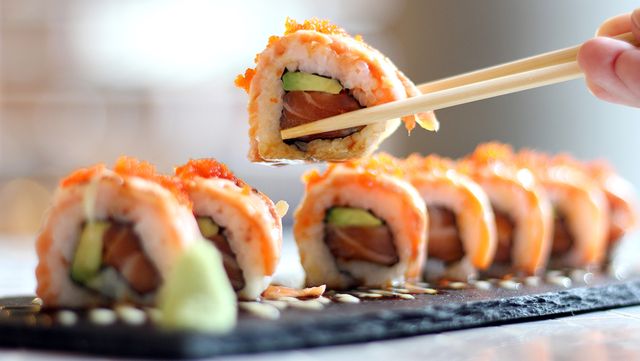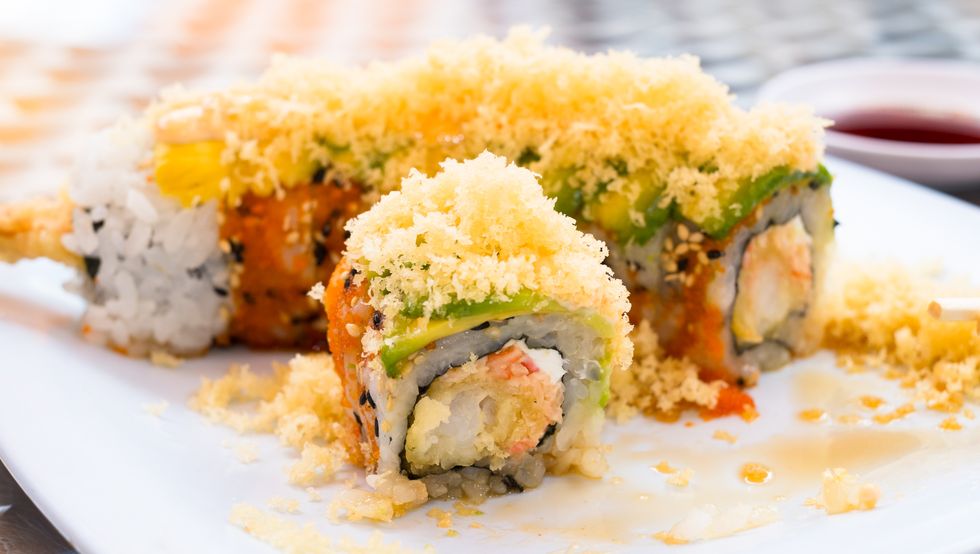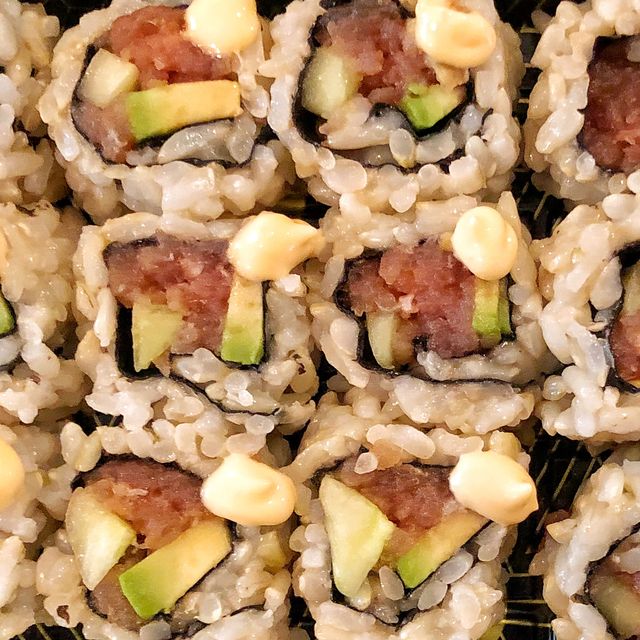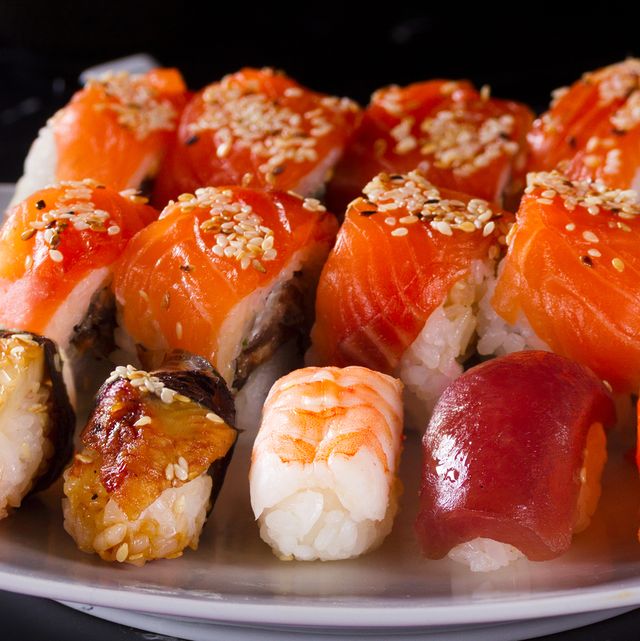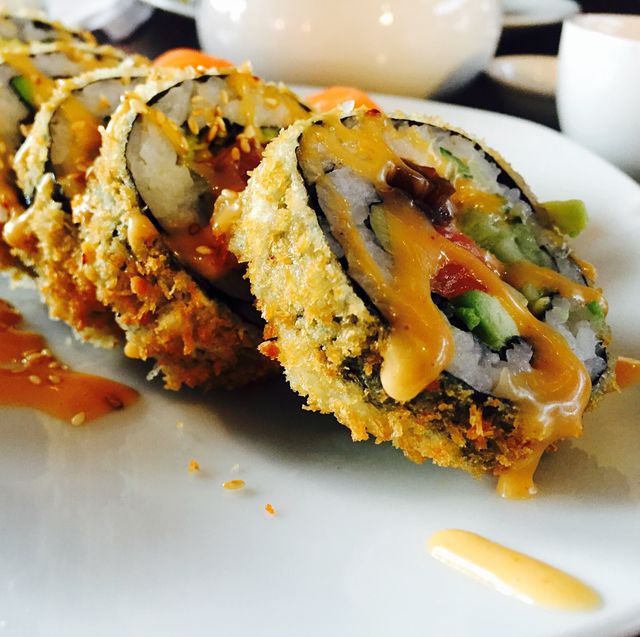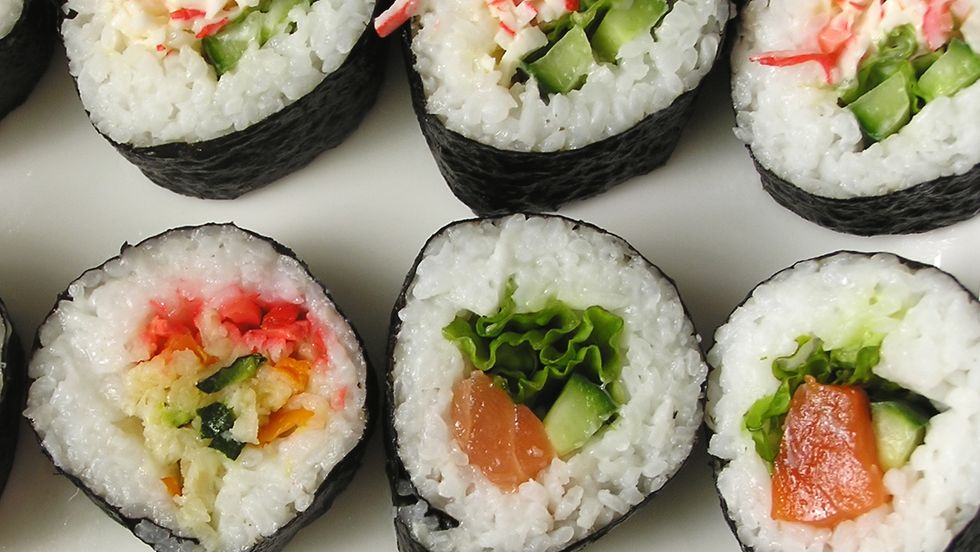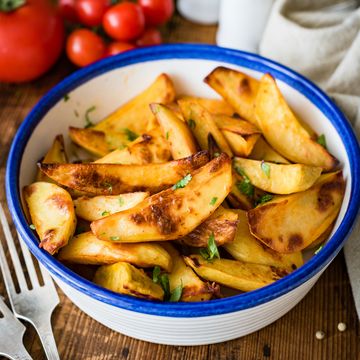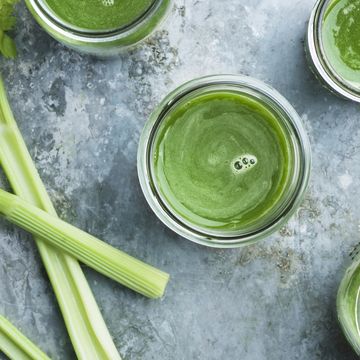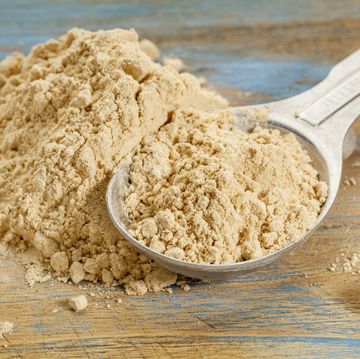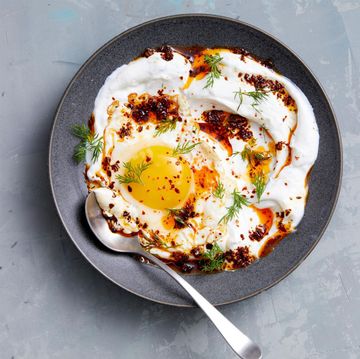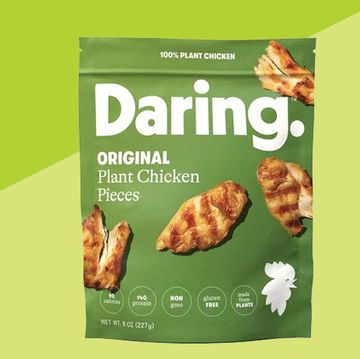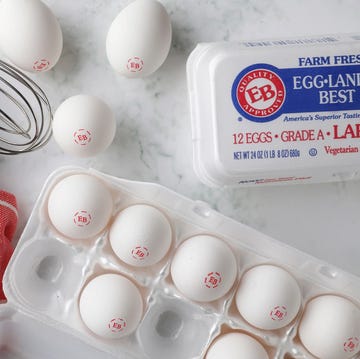When it comes to takeout, sushi is a better choice than pizza, fried chicken, or basically anything from a drive-through window. But is sushi healthy, really?
It can be: “You get a mix of carbs, protein, and fat all in this one roll—plus, it’s portion controlled,” says Keri Gans, RD, CDN, author of The Small Change Diet.
But sushi can quickly become a high-carb, high-fat calorie bomb if you don't order smart, says Lisa Moskovitz, RD, CDN, founder of The NY Nutrition Group.
Here, Gans and Moskovitz weigh in on the good, the bad, and the right way to order a healthy sushi meal.
Sushi nutrition: The good
Sushi does have a lot going for it.
It's not cooked in anything
“One of the good things about sushi is that most of the things you eat are raw, so you don’t have to worry about a lot of added salt or butter or whatever else your meal might have been cooked in,” Moskovitz says.
You're in control of what goes in a roll
You also have a lot of control over what goes into your sushi roll. It’s easy to avoid some of the more high-calorie ingredients by choosing a roll with nutritious add-ins—veggies like asparagus, cucumber, or sweet potato, along with healthy fats like avocado.
It's full of omega-3s
The crux of sushi’s health factor, however, lies in the raw fish itself. Especially when you order salmon or tuna, “you’re going to get omega-3 fatty acids, which are associated with a lot of health benefits,” Gans says, especially when it comes to your heart health.
A large body of research shows that omega-3s help to lower blood pressure, cholesterol, and inflammation (a known precursor to heart disease), according to the National Institutes of Health.
Sushi nutrition: The bad
Calories add up quickly
Even with healthy ingredients, the calories in sushi can add up faster than you might expect—especially once you start looking at specialty rolls, Gans says. “Eel and yellowtail are very fatty, so that is going to add more calories than the tuna or salmon, for example,” she explains. A basic rule of thumb? The more that’s wrapped into a roll, the more calories it will contain.
Toppings tend to be gut-bombs
Add-ons like spicy mayo, tempura, or extra avocado tack on tons of extra calories and fat.
It can be loaded with sodium
“You also have to be careful with the soy sauce since it’s extremely high in salt,” Moskovitz says. Consuming too much sodium can up your blood pressure, bringing your risk of heart disease up with it. “The average adult should consume no more than 2,300 milligrams (mg) of sodium per day,” Moskovitz says. “Even the low sodium versions, which are better, can still contain quite a bit of salt.”
❗Think before you dip: The average tablespoon of soy sauce (also known as tamari) can contain up to 1,000 mg of sodium alone, give or take depending on the brand you go for.
There's a ton of rice in every roll
Rice is one of the biggest reasons you have to watch the number of rolls you consume. “Sushi can contain the equivalent of one whole cup or rice in one roll—and that can be 200 calories and 45 grams of carbs,” Moskovitz says. “They also often add sugar water to the rice.”
That said, if you’re watching your carb intake the rest of the week, splurging on sushi night isn’t necessarily the worst thing, Gans argues. “The average American is not consuming enough fiber in their diet, so anywhere you can add some in is good,” she says.
*Nutrition facts based on figures provided by a national sushi restaurant chain
So, is sushi healthy or what?
It depends. “Not everything on the menu is healthy, but if you focus on getting raw fish with lots of veggies, it can be a very nutritious and low-cal meal,” says Moskovitz.
So, rather than order a specialty roll or spicy tuna, opt for a leaner salmon and cucumber roll with a side of edamame (packed with fiber, protein, and iron) to up your nutrients and keep your calorie count in check. Or skip rice altogether and order sashimi (thin slices of raw fish served with soy sauce).
Finally, sushi night shouldn’t be an everyday affair, Gans says. “I definitely think people should eat seafood a minimum of two times per week, but with sushi the sodium intake can get a little high if you have it too often,” she says. “Stick to once a week.”
How to order healthy sushi
Avoid tempura rolls
Deep fried tempura is the quickest way to tank your sushi order. “You want to stay away from any of the fried options because that’s just going to increase the calories of your meal,” Gans says, thanks to extra oil and all of those bread crumbs. Same goes for “crunchy rolls,” adds Moskovitz.
Dial back on avocado
While avocado is a healthy fat and definitely has a place in your diet, “avocado is going to increase your calories,” Gans says. You don’t have to ditch your salmon avocado rolls, she stresses, but rather than getting two rolls with avocado, make one a cucumber roll instead. “I tell people if you’re ordering two rolls you should only have one with avocado,” Gans says.
Skip the spicy rolls
The added dose of mayo in a spicy roll can easily drag your meal into unhealthy territory. Just one tablespoon of mayo contains 100 calories. Stick with plain tuna over spicy tuna.
Rethink your rice
A naruto roll—which is made with a thin cucumber slice instead of rice—is a good option for people who want to watch their carb intake, suggests Moskovitz. If you’re not into the cucumber, you can also ask the restaurant to skip the rice and just wrap your roll in seaweed. If you really want the carb kick, just opt for brown rice over white.
Be mindful of servings
Moskovitz recommends keeping your order to two rolls with no sides or appetizers or one roll with a couple of nutritious sides.
“Every Japanese restaurant has a mixed green salad,” says Gans. There’s also seaweed salad, packed with antioxidants and fiber; Ohitashi, a cold spinach dish rich in vitamins and minerals; and miso soup, “a really good source of probiotics which are good for digestive health,” Moskovitz adds.
Macaela MacKenzie is a journalist who writes about women and power. She covers women’s equality through the lenses of sports, wellness, and the gender gap across industries and is the author of MONEY, POWER, RESPECT: How Women in Sports Are Shaping the Future of Feminism. Mac was most recently a Senior Editor at Glamour where she directed all health and wellness coverage. Her work has appeared in Elle, Glamour, SELF, Bustle, Marie Claire, Allure, Women's Health, and Forbes among other publications.
